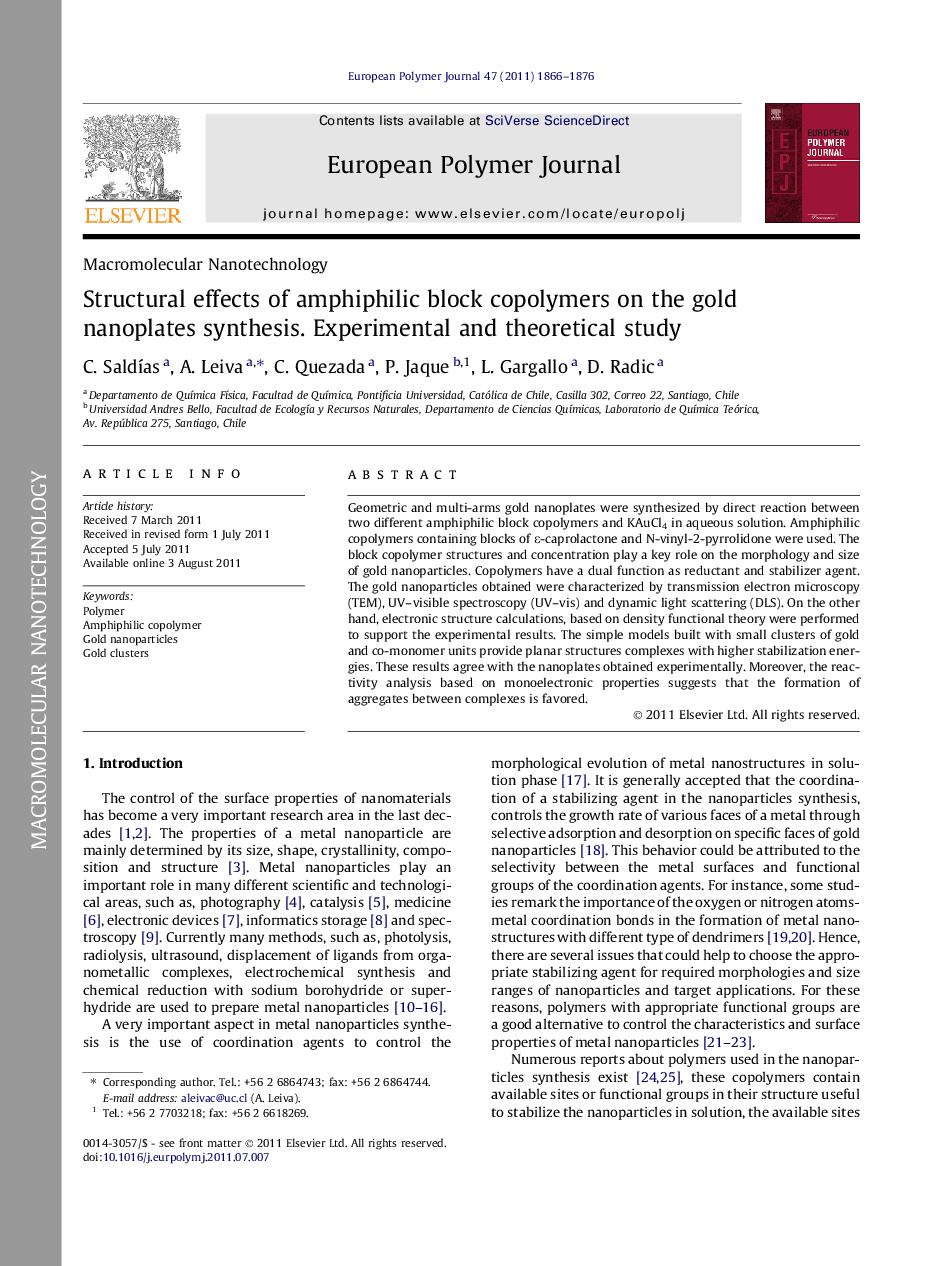| Article ID | Journal | Published Year | Pages | File Type |
|---|---|---|---|---|
| 1400660 | European Polymer Journal | 2011 | 11 Pages |
Geometric and multi-arms gold nanoplates were synthesized by direct reaction between two different amphiphilic block copolymers and KAuCl4 in aqueous solution. Amphiphilic copolymers containing blocks of ε-caprolactone and N-vinyl-2-pyrrolidone were used. The block copolymer structures and concentration play a key role on the morphology and size of gold nanoparticles. Copolymers have a dual function as reductant and stabilizer agent. The gold nanoparticles obtained were characterized by transmission electron microscopy (TEM), UV–visible spectroscopy (UV–vis) and dynamic light scattering (DLS). On the other hand, electronic structure calculations, based on density functional theory were performed to support the experimental results. The simple models built with small clusters of gold and co-monomer units provide planar structures complexes with higher stabilization energies. These results agree with the nanoplates obtained experimentally. Moreover, the reactivity analysis based on monoelectronic properties suggests that the formation of aggregates between complexes is favored.
Graphical abstractFigure optionsDownload full-size imageDownload as PowerPoint slideHighlights► Gold nanoplates synthesis assisted by copolymers. ► Copolymers as reductant and stabilizer agents. ► The effect of block copolymers structure on nanoparticles shapes was established. ► Geometric and multi-arms gold nanoplates can be synthesized. ► Theoretical studies of gold clusters and polymer model provide stable planar structures.
